LA TERRA CRUDA: caratteristiche
Regolatrice di umidità̀: assorbendo importanti quantità di umidità̀ e rilasciandole nell”ambiente gradatamente. Mantiene l”umidità̀ relativa in condizioni ottimali per l”uomo tra il 50% e il 70%.
Antistatica: non si carica elettrostaticamente;
Riduce la formazione della polvere: e contribuisce alla prevenzione di malattie alle vie respiratorie, come l”asma, e le allergie.
Sana: non emette gas tossici, né́ esalazioni e reazioni chimiche.
Non emette radiazioni: e concorre a proteggere dai campi elettromagnetici.
Protegge dall”elettrosmog: Secondo uno studio del professor Schneider, dell”istituto militare di Monaco di Baviera, 2,5cm di intonaco d”argilla elimina il 75% delle radiazioni sviluppate da un impianto ad alta tensione.
Atossica anzi viene usata per le sue proprietà̀ curative, cosmetiche e antisettiche.
Termoregolatrice: mantiene la temperatura fresca d”estate e accumula il calore d”inverno, agevolando l”efficienza energetica.
Resistenza al fuoco: oltre ad essere ignifuga rende tali anche i materiali fibrosi di origine naturale con cui spesso è̀ accoppiata e mescolata.
Riciclabile: al 100%, il materiale può essere recuperato e rilavorato.
Non spreca acqua: per la lavorazione, la sola acqua impiegata è quella dell”impasto e viene completamente restituita all”ambiente durante l”essicazione e la maturazione.
Bassa emissione di CO2: a parità̀ di unità̀ prodotte, la filiera del crudo arriva a consumare fino al 60% di energia in meno rispetto a quella del cotto, senza sprigionare nell”atmosfera significative emissioni di CO2.
Fonoassorbente: l”intonaco in argilla ha un buon comportamento acustico, attutisce i suoni a bassa frequenza migliorando così̀ il comfort abitativo.
Trattiene gli odori: l”argilla, essendo un colloide, ha una grande capacità̀ di trattenere polvere, gas e odori presenti nell”aria mantenendo quindi l”ambiente salubre.
Traspirabilità̀: lega effetto estetico e aspetto funzionale..
TERRA CRUDA: tipologie
Esistono tantissime tipologie di prodotti da quelli a secco, a quelli complementari e a quelli accessori, riportiamo qui sotto quelli che utilizziamo maggiormente nei lavori che ci coinvolgono.
PRODOTTI PER PARETI
MURATURA IN PISÉ.
Caedo è un prodotto composto unicamente da sabbia calcarea e argilla pura, viene utilizzato come riempimento nei solai, muri divisori, contropareti ed è apprezzato per la notevole inerzia termica. Utile per le case passive per la capacità di trattenere il calore nell”ambiente, nelle strutture leggere e nelle case in legno. Può essere utilizzato ad umido con l”antica tecnica della terra battuta nei pavimenti oppure con la tecnica del pisé per la costruzione di muri divisori di pregio, muri di accumulo di calore sia nel solare passivo che nel riscaldamento per irraggiamento.
INTONACO DI FONDO IN ARGILLA
Intonaco di fondo SB2 è un prodotto composto unicamente da sabbia calcarea e argilla pura ed è apprezzato per la notevole inerzia termica. Di color camoscio, facile da posare e lavorabile come un normale intonaco, diventa un ottimo fondo per le finiture d”argilla SB4 oppure la pittura Terrapaint. Fotocromaticamente stabile, alle mani degli artisti diventa un materiale plasmabile che riesce a creare delle finiture di alto livello. Utile per le case passive per la capacità di trattenere il calore nell”ambiente, nelle strutture leggere e nelle case in legno. Si presta in modo particolare anche come intonaco provvisorio nelle iniezioni consolidanti su pareti a facciavista in quanto è facilmente rimovibile con acqua.
Rasante in argilla. Rasante a base di argilla cruda da utilizzare per la finitura di pannelli isolanti naturali come come il legno mineralizzato (eraclit, celenit), il sughero, la fibra di legno, calcestruzzo cellulare e altri materiali porosi e traspiranti. Controllando bene l”umidità del supporto evita imbarcamenti e eccessive fessurazioni, gode di ottime proprietà fonoassorbenti.
Intonaco di finitura in argilla. Tonachino a base di argilla cruda da utilizzare per la finitura di pareti e soffitti, si consiglia sopra l”intonaco Terragena SB2 oppure sopra il rasante Terragena SB3. Gode di eccellenti caratteristiche di traspirabilità e grazie all”effetto vellutato si comporta come un rivestimento di pregio. Utilizzato dai grandi ecodesigner per il rivestimento di tutti i locali abitativi, trova utilizzo anche negli spazi di lavoro per legare effetto estetico e aspetto funzionale dell”argilla cruda.
CERA PER INTONACI
Soluzione trasparente a base di acqua, cera d”api, cera carnauba ed emulsionati naturali; viene impiegato sopra gli intonaci in argilla cruda del tipo Terragena B4 o Terragena SB4 per impedire eccessivi sfarinamenti. Su intonaci esteri a calce protegge dagli agenti atmosferici ed impermeabilizza l”intonaco.
Il prodotto va applicato puro sulla superficie da trattare, non necessita di diluizione. Prima dell”applicazione si consiglia di passare l”intonaco con spazzola morbida per asportare le parti lattimi, per migliorare il potere consolidante si consiglia di applicare 2 o tre mani a distanza di 5 minuti una dall”altra con pennellessa o a spruzzo con idonea pompa.bv h
PRODOTTI PER PAVIMENTI
MURATURA IN PISÉ.
Caedo è un prodotto composto unicamente da sabbia calcarea e argilla pura, viene utilizzato come riempimento nei solai, muri divisori, contropareti ed è apprezzato per la notevole inerzia termica. Utile per le case passive per la capacità di trattenere il calore nell”ambiente, nelle strutture leggere e nelle case in legno. Può essere utilizzato ad umido con l”antica tecnica della terra battuta nei pavimenti oppure con la tecnica del pisé per la costruzione di muri divisori di pregio, muri di accumulo di calore sia nel solare passivo che nel riscaldamento per irraggiamento.
LEGANTE PER MASSETTI.
Naturpav è un legante per massetto composto da argilla pura e solfato di calcio con certificazione ANAB-ICEA per la bioarchitettura con delle caratteristiche del tutto uniche. Un massetto realizzato con Naturpav è altamente traspirante e allo stesso tempo resistente. Si possono realizzare grandi metrature senza la necessità di giunti di dilatazione. Il massetto in argilla è la base ideale per la finitura Leviter.
FINITURA NATURALE IN ARGILLA PER PAVIMENTI.
LEVITER è frutto di una attenta ricerca dei materiali naturali come l”argilla cruda, l”olio cotto, l”essenza di arancio e la cera d”api. La fusione di questi ingredienti genuini fa nascere una pavimentazione di alto pregio con un impatto estetico importante. Grazie all”alta elasticità di questo rivestimento è possibile realizzare grandi metrature senza eseguire giunti di dilatazione, nemmeno sopra l”impianto di riscaldamento a pavimento. La gamma colori consente di ottenere un vasto effetto cromatico mentre la manualità dell”applicazione consente di ottenere infiniti effetti, dal materico al più liscio e vellutato. La combinazione tra colore e lavorazione consente di ottenere una infinita gamma di finiture.
Il pavimento in argilla Leviter è composto da un massetto in argilla realizzato con il legante Naturpav e da uno strato di finitura di finitura in argilla consolidato con oli vegetali cotti.
La realizzazione del pavimento richiede di rispettare i tempi di asciugatura e stagionatura dei materiali. Per la stesura della finitura e il consolidamento con l”olio sono necessari circa 20 giorni. Una buona maturazione della superficie richiede circa 2 o 3 mesi dal trattamento finale con l”olio, durante questo periodo la superficie è calpestabile ma carichi consistenti applicati su piccole superfici possono ancora lasciare dei segni o delle ammaccature.
TERRAGENA OIL - OLIO PER PAVIMENTI
Consolidante per pavimenti in argilla cruda, ottenuto da una soluzione a base di oli di lino, papavero e noce, cotti.
Viene impiegato per il consolidamento dei pavimenti in argilla cruda, applicato sulla finitura completamente asciutta rende il fondo resistente ed impermeabile.
Può essere completato con Terragena Cera.
CERA PER PAVIMENTI
Soluzione trasparente a base di acqua, cera d”api, cera carnauba ed emulsionati naturali; viene impiegata come trattamento protettivo per pavimenti in argilla cruda.
Il prodotto va applicato puro sulla superficie da trattare, non necessita di diluizione. Si consiglia di effettuare il trattamento dopo almeno 6-7 giorni dal trattamento con Terragena Oil; verificare che il pavimento sia pulito e asciutto, applicare a pennello in modo omogeneo su tutta la superficie.
Per una buona protezione applicare 2 o più mani attendendo che ogni mano asciughi perfettamente.
ACCESSORI
ARELLA PORTA-INTONACO RILEGATA IN ACCIAIO
Indispensabile nelle superfici lisce, nel tavolato oppure per la formazione delle contro pareti o dei controsoffitti. È un ottimo supporto per l”intonaco a base calce o argilla. Le cannucce, di origine italiana, sono rilegate una ad una con filo in acciaio.
RETE IN IUTA MAGLIA 5X5MM
Rete naturale per il rafforzamento dell”intonaco. Viene utilizzata come maglia all”interno dell”intonaco, evita la formazione di crepe causate da movimenti strutturali. Indispensabile per intonacature su pareti che presentano differenti tipi di supporti o sopra pannelli.
La cura dei dettagli che contraddistingue la mia progettualità, nasce da una essenziale passione per le tematiche relative ai materiali e alla tecnologia antica e attuale, con un occhio di riguardo alla sostenibilità ambientale e un interesse piuttosto forte per gli aspetti del risparmio energetico, del recupero, della bioarchitettura e della relativa selezione dei materiali naturali, riciclati, tenendo presente anche l’aspetto della componente estetica.
Amo la cura dei dettagli, le tecniche antiche e attuali, la sostenibilità, il recupero, la bioarchitettura, i materiali naturali, riciclati, la componente estetica e la grafica. Amo la ricerca dell'equilibrio. Mi piace cucinare creativamente. Amo il lavoro di dettaglio, manuale, artistico, artigianale.
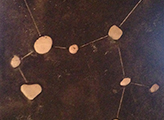 Terra Stellare
Terra Stellare
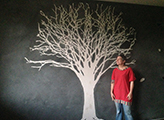 L’Albero della Vita
L’Albero della Vita
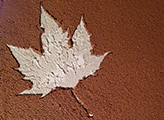 Foglie di Terra
Foglie di Terra
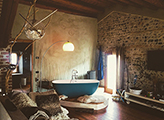 Una barca nel Fiume Piave
Una barca nel Fiume Piave
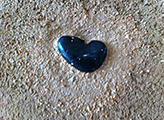 Pterodattilo
Pterodattilo
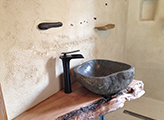 Terra Bianca
Terra Bianca
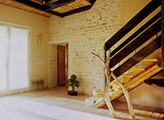 Interni di Terra B&b
Interni di Terra B&b
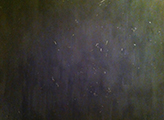 La Terra Cruda Bruciata
La Terra Cruda Bruciata
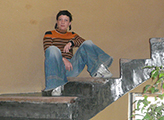 Terre e sagramature
Terre e sagramature
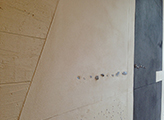 Una Porta per S
Una Porta per S
 Terra Cruda Rock
Terra Cruda Rock
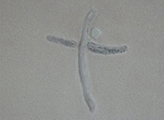 Segni di Terra
Segni di Terra
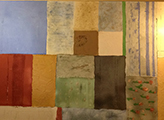 Patchwork di Terra
Patchwork di Terra
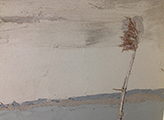 Terre Paesaggio Nordico
Terre Paesaggio Nordico
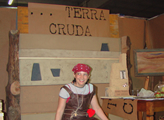 Fiera 4 passi
Fiera 4 passi
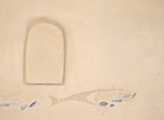 Terre B&b
Terre B&b
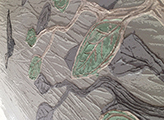 Albero di Terra
Albero di Terra
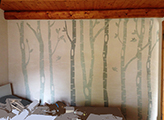 Il bosco di Betulle
Il bosco di Betulle
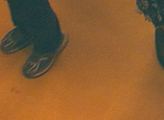 Terra per la Musica
Terra per la Musica
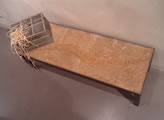 Terranchina
Terranchina